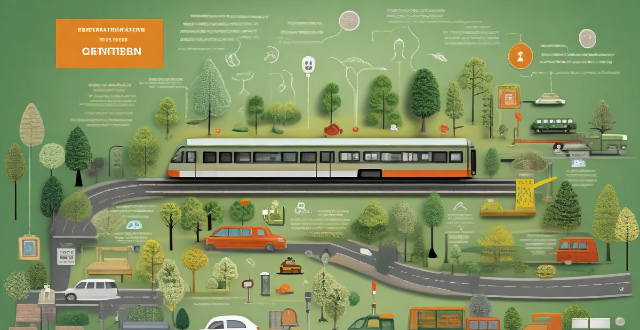Transportation's Impact on Our Carbon Footprint explores how different modes of transportation contribute to greenhouse gas emissions. It highlights the significance of air travel and cars as major sources of CO2 emissions, while also discussing the benefits of public transit, cycling, and walking. The text emphasizes the importance of vehicle efficiency, alternative fuels, and urban planning in reducing carbon footprint. It suggests strategies such as reducing air travel, driving less, choosing efficient vehicles, and supporting green infrastructure to mitigate transportation's impact on the environment.

Transportation's Impact on Our Carbon Footprint
Transportation is a significant contributor to our carbon footprint. The way we move around, the vehicles we use, and the distances we travel all play a role in determining the amount of greenhouse gas emissions we produce. Let's delve into the details:
Modes of Transportation
Different modes of transportation have varying levels of environmental impact:
- Air Travel: This is one of the most carbon-intensive forms of transport. Flying releases a large amount of CO2 per passenger mile, especially for short flights.
- Cars and Trucks: These are major sources of CO2 emissions, especially if they run on petrol or diesel. Electric vehicles (EVs) offer a more sustainable alternative but still require energy production for charging.
- Public Transportation: Buses, trains, and subways generally produce fewer emissions per passenger mile than individual car travel.
- Bicycles and Walking: These are the most sustainable options as they produce zero direct emissions.
Efficiency and Fuel Type
The efficiency of vehicles and the type of fuel they use also influence carbon emissions:
- Fuel Efficiency: More efficient vehicles use less fuel per mile traveled, resulting in lower emissions.
- Alternative Fuels: Biofuels, hydrogen, and electricity can reduce emissions compared to fossil fuels, depending on how they are produced.
Distance and Congestion
The distance traveled and traffic congestion further affect transportation's carbon footprint:
- Long Distances: Longer trips typically involve more fuel consumption and higher emissions.
- Congestion: Stop-and-go traffic increases fuel use and emissions.
Infrastructure and Urban Planning
How cities are designed and transportation infrastructure is developed plays a crucial role:
- Urban Sprawl: Spread-out cities require more driving, leading to increased emissions.
- Public Transit Infrastructure: Well-developed public transit systems can reduce the need for personal vehicles.
Mitigating Strategies
To reduce transportation's impact on our carbon footprint, consider these strategies:
- Reduce Air Travel: Opt for virtual meetings or choose destinations closer to home when possible.
- Drive Less: Carpool, use public transit, cycle, or walk whenever feasible.
- Choose Efficient Vehicles: Opt for fuel-efficient or electric vehicles.
- Support Green Infrastructure: Advocate for better public transit and bike lanes in your community.
Conclusion
Transportation's impact on our carbon footprint is multifaceted and depends on various factors including the mode of travel, vehicle efficiency, fuel type, distances covered, and urban planning. By making conscious choices about how we move, we can significantly reduce our individual and collective carbon footprints.